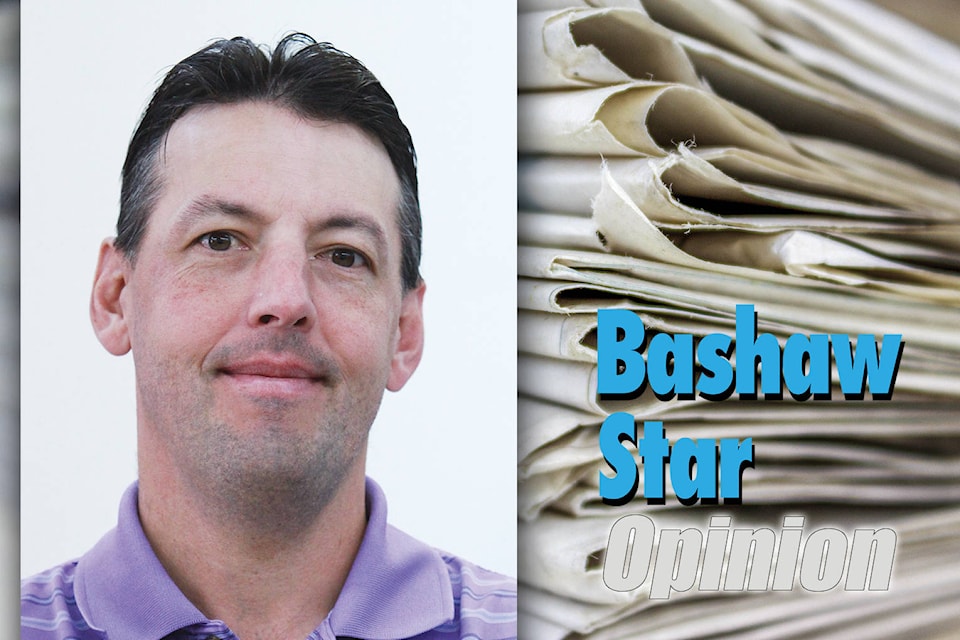When the provincial government’s “expert” — and I use that term rather loosely — panel on finance was convened it was simply a matter of when the cuts would come and how much it would cost Albertans.
And when the recommendations came out earlier this month, the annual target figure came as no real shock, though everyone was still left guessing just where exactly the $600 million would come from.
Oh sure, the pundits and economists focused on health spending — which is the-easy-to-spot elephant in the room — as well as education and the civil service.
Unfortunately for rural and small municipalities, and maybe even the medium sized ones, they all now know they and their taxpayers have a target aimed at emptying their pockets.
A recent online presentation from the province outlined what could at best be labelled as a “not so trial balloon” under the disguise of a “suggested proposal.”
The idea tossed up in the air was that towns or villages with less than 5,000 in population and rural counties, both of which don’t currently pay directly for policing costs, would be on the hook for a portion of the provincial RCMP contract.
While it may look “fair” for these municipalities to bear at least some burden for the RCMP members that serve them, the approach seems to be less about fairness and more about tapping into funds the province can’t otherwise get their hands on.
The proposition outlined would work like this:
The province will take each municipality’s equalized assessment (meaning the overall taxable assessed value property would be divided by the municipality’s assessment level) and multiply that number by a certain percentage, loosely weighted based on population and their crime severity index (CSI), to come up with how much the municipality would be required to pay for policing costs.
While this method is supposed to treat every municipality the same, that’s not exactly happening.
For example, one county’s cost for policing is being calculated at 30 per cent of their equalized assessment while other municipalities are looking at percentages as low as 15 or as high as 70 per cent.
When translated into dollars, the jump in expenses ranges from just a few thousand dollars to as high as $15 million.
Granted, the province did explain some municipalities would receive subsidies if they have a higher than average CSI as well as for any shadow population.
However, the issue is how the increase was being justified by the province.
The bureaucrats spoke of the increase in terms of dollars per person, such as $145 or $406. The trouble is that no municipality taxes its residents on this basis.
What that means for the average household of four, even at the low end of the scale, is a hit of nearly $600 annually. Heaven forbid you live in a county at the upper end and face a tax hike of more than $1,600.
This is strictly a dumping of the financial responsibility from the province onto municipalities, and ultimately taxpayers, to make up a big chunk of the costs.
This fact means taxpayers are being hit up twice, since provincial income tax and other fees aren’t going down, are they?
And to paraphrase one municipal administrator, this is likely only the beginning.
The province is continuing to move forward with the previous government’s path of requiring municipalities that border each other to find ways of collaborating together and perhaps save some funds.
In addition, many counties have seen a nearly 200 per cent price hike from the province in conducting the annual linear property assessment.
As well, municipalities are anticipating that the end is nigh for the Municipal Sustainability Initiative (MSI) that funded all sorts of capital projects, from various recreation facilities and roads to other important municipal infrastructure.
And with many unions that represent teachers, health care workers and government employees seeing the writing on the wall regarding wages, next month’s budget may well tell a tale of where this province is heading.
Judging from this trial balloon, the forecast points to a hurricane coming in that’s ready to take out municipalities that have nowhere to hide, except behind taxpayers.
But that is…just an observation.
